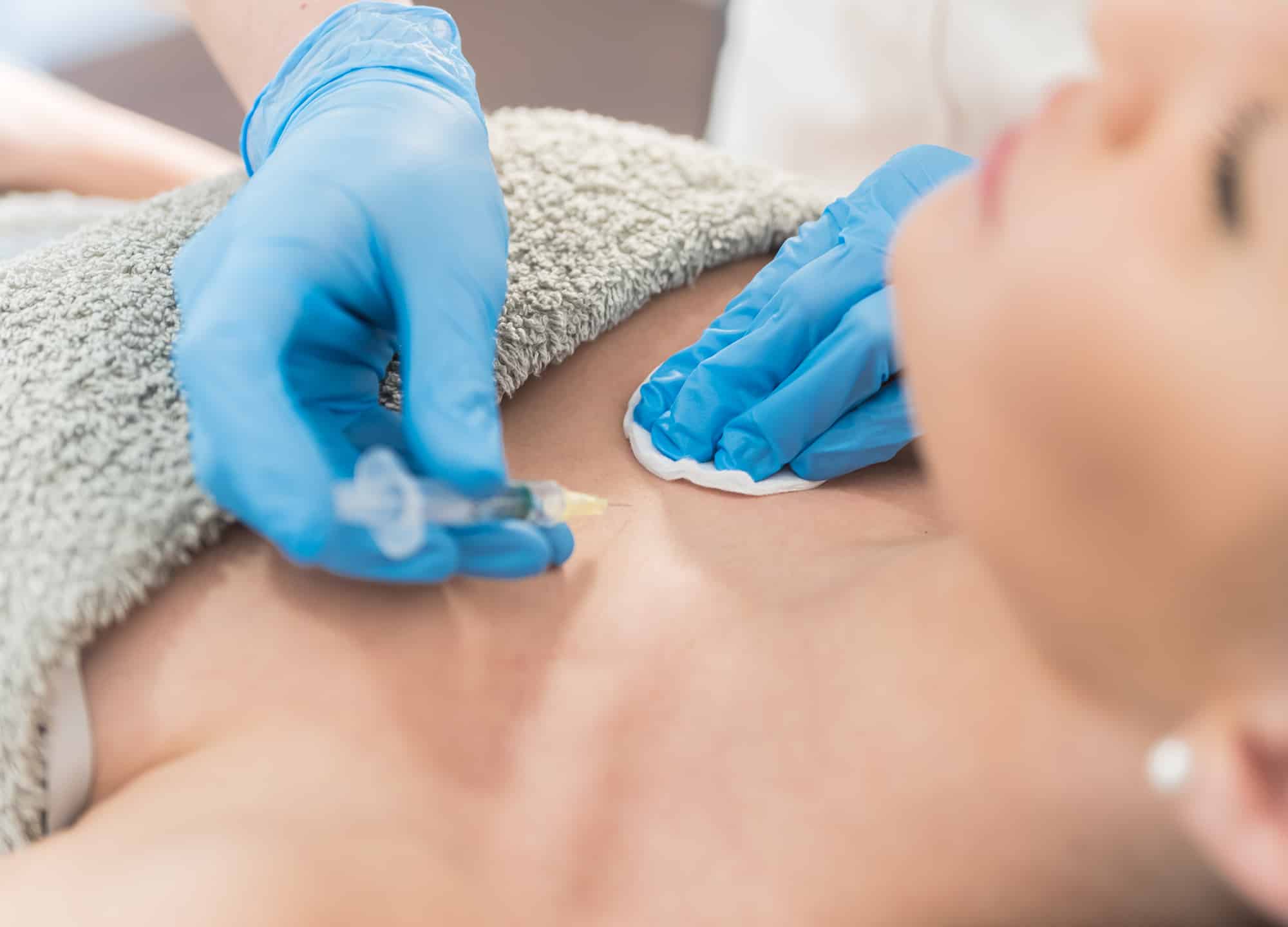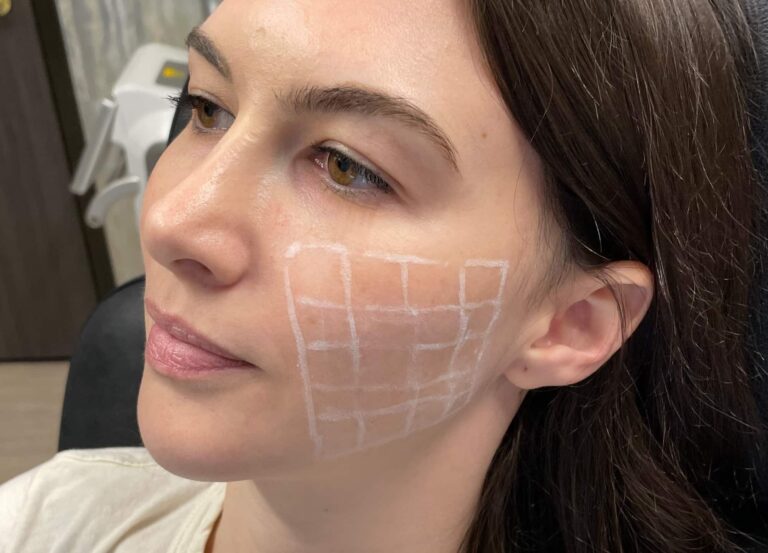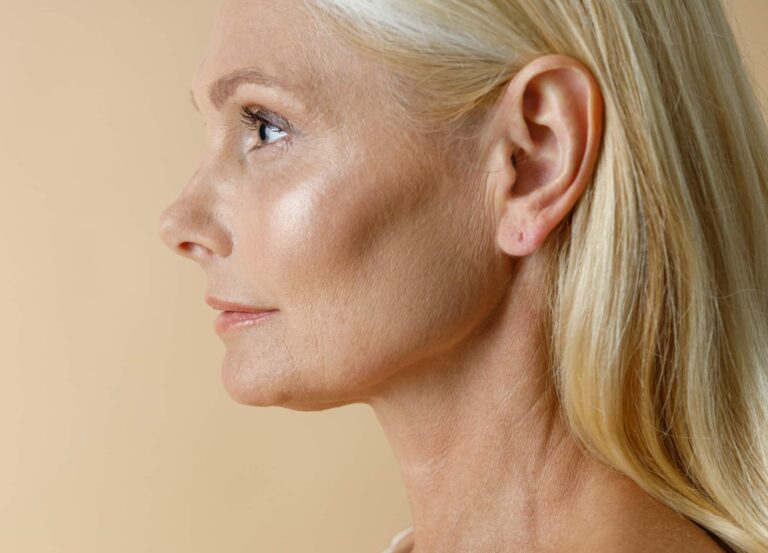The world of beauty extends far past luxe facials and red carpet skin treatments. In fact, high-powered skin care usually isn’t very glamorous at all, sometimes even bordering on downright creepy. So in the spirit of Halloween, we rounded up the cosmetic treatments that sound like they’re straight out of a horror movie. Here, doctors break down each procedure in order to help you decide if they’re actually worth the fright. But beware, the following treatments are not fit for a hemophobe.
Vampire Facial
After being put on the map by Kim Kardashian, the Vampire Facial spread like wildfire among those looking to improve their complexion. You’ve probably seen the eye-catching photos on Instagram already: A selfie where the individual’s face is covered in droplets of blood. But don’t fret—this treatment boasts some serious results. “The Vampire Facial is microneedling followed by [an application of] platelet-rich plasma (PRP),” says Nanuet, New York, dermatologist Dr. Heidi Waldorf. “The PRP is used to introduce growth factors to stimulate more collagen [in the skin] than the microneedling alone.”
The process begins by first drawing the patient’s blood and spinning it in a centrifuge to separate out the PRP, or “liquid gold,” as Greenwich, Connecticut, dermatologist Dr. Kim Nichols likes to call it. Then microneedling—a treatment that uses tiny needles to create micro injuries on the skin—is performed and the patient’s PRP is applied to the face. “Microneedling produces a superficial injury to stimulate collagen and [create] entry points for the PRP to enter the skin,” explains Dr. Waldorf. While this may sound slightly cringeworthy, applying the PRP to skin that’s undergone microneedling allows the growth factors to reach deeper layers of the dermis. The procedure requires multiple treatments as well as maintenance, but patients report seeing reduction in the appearance of scars, hyperpigmentation, fine lines and pores.
Even though the vampire facial has a 95% RealSelf Worth It Rating, Dr. Waldorf stresses that there are still risks—like scarring and increased hyperpigmentation—associated with it. “With PRP, [there is a] risk of infection if blood products are mixed between patients,” she adds. “Of course, that should never happen when universal standards of infection control are followed.” While rare, two people in New Mexico contracted HIV from the treatment in the spring of 2019, when it was performed in a way that did not follow a standardized set of practices. However, the procedure is deemed safe when performed by a professional who follows the correct safety protocol.
Vampire Facelift
A Vampire Facelift begins the same way as a Vampire Facial: with a doctor isolating a patient’s PRP from their own blood. But instead of slathering the PRP onto the patient’s skin post-microneedling, it is injected into the face—sometimes in combination with fillers—to plump areas that are experiencing volume loss. “The results of this are very natural-looking,” says Dr. Nichols. “This is an excellent choice for people who may have had a reaction to synthetic filler in the past or simply prefer to forgo synthetic filler.” According to Dr. Nichols, you need about six treatments in total to really see more drastic results when injected alone. “I love this for the under-eyes, to help with dark circles or hollowness—the result is subtle.”
When combined with synthetic fillers—like Juvéderm or Restylane—the PRP injections are thought to work in tandem with hyaluronic acid to deliver longer-term results. Hyaluronic acid is more effective at plumping sagging areas of the face while the PRP injections deliver growth factors to stimulate collagen and elastin production. It’s important to note, however, that there’s little research done on the use of PRP for facial rejuvenation, and Dr. Waldorf adds that there is also no evidence proving that adding PRP to filler injections will enhance the longevity of results.
PRP injections for hair loss
Another PRP-based treatment that makes our list (are you seeing a trend here?) is PRP injections for hair loss. “Hair loss is the condition for which there is the most supporting data for PRP use,” says Dr. Waldorf. “It works by providing [structure] for the production of growth factors to stimulate hair growth.” PRP is injected into a patient’s scalp where thinning hair is present, provoking hair follicles to grow. “I inject while using [a] local vibration [tool] that reduces discomfort and may help spread the PRP,” says Dr. Waldorf. “Most patients find it starts to sting or throb a few minutes into the procedure, but that resolves quickly with a combination of ice packs and continued surface vibration.”
While multiple studies have shown that PRP can significantly improve certain forms of alopecia—specifically, androgenetic alopecia (genetic hair loss) and alopecia areata (hair loss caused by an autoimmune disorder), more research needs to be conducted to measure effectiveness, since there is currently no standardized protocol for PRP injections. Dr. Nichols also asserts that even though she has seen great outcomes from this treatment, results are not promised, and it will not boast the same effect of a hair transplant. “You also need to do other things in conjunction with PRP injections for hair loss—like hair-regrowth vitamins or medicated shampoo,” she adds. Supplements, like Nutrafol ($88), and medicated treatments, like Minoxidil (which has been proven to show improvement in hair regrowth for patients with traction alopecia), are both great products to further improve hair growth.
Vampire Breast Lift
When it comes to the Vampire Breast Lift, no surgery (or appearance by Dracula) is necessary. Doctors mix a patient’s own PRP with filler and inject it into the breasts, to create fuller, perkier cleavage. “The way it differs from a traditional breast lift is that a breast lift lifts the breast [with surgery] and the Vampire Breast Lift [only injects] PRP,” says Livingston, New Jersey, plastic surgeon Dr. John Paul Tutela. The concept behind this treatment is that the PRP containing stem cells and growth factors stimulates collagen and new cell growth, adding volume to the breasts. While a small study proves that PRP can create blood vessel growth, hence boosting the area its injected into, it doesn’t produce long-term results. “Soft tissue swells temporarily, and then everything [eventually] goes back,” says Dr. Tutela.
This procedure is noninvasive (meaning no scars!), and the entire process takes about 15 minutes. However, there are no studies that clearly determine the effectiveness of the Vampire Breast Lift, so be sure to talk to your doctor to assess your best course of treatment before scheduling an appointment.











